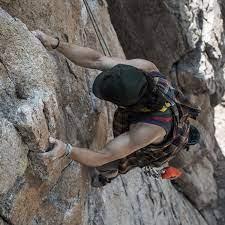Preventing Rock Climbing Accidents: Safety Equipment and Techniques
Stanley Bangani![]() Invalid date
5 minutes, 20 seconds
Invalid date
5 minutes, 20 seconds
673 views 0 Likes
Introduction
Rock climbing is an exhilarating and physically demanding sport that allows enthusiasts to connect with nature, challenge their limits, and experience a deep sense of accomplishment. However, it's also a sport that comes with inherent risks. Preventing rock climbing accidents is paramount, and this can be achieved through a combination of proper safety equipment and techniques. In this blog, we will explore essential safety measures, gear, and techniques that climbers should incorporate into their practices to minimize the chances of accidents while scaling those breathtaking rock faces.
Education and Training
Before even stepping onto a climbing route, it's essential to receive proper education and training. Joining a climbing gym or enrolling in climbing classes is a great way to start. Climbing is not just about physical strength; it requires knowledge of safety protocols, belaying techniques, and understanding the unique challenges of different types of rock faces.
Helmets
A helmet is an indispensable piece of safety equipment for rock climbers, serving as a crucial element in their protection. Helmets protect against head injuries caused by falling debris, collisions with the rock face, or even a fall. Ensure that your helmet fits securely and covers your entire forehead, and always wear it when climbing.
Harness and Belay System
A well-fitted harness and a reliable belay system are crucial for safety. Your harness should be snug but not too tight, and all straps should be properly adjusted. The belay system, including the harness, rope, and belay device, should be in excellent condition and used correctly. Belaying is a skill that requires proper training to ensure the climber's safety.
Footwear
Proper climbing shoes with sticky rubber soles are essential for good grip on the rock. Ill-fitting shoes or regular sneakers can increase the risk of slipping and accidents. Invest in climbing shoes that provide a snug fit to maximize control and precision.
Ropes
Climbing ropes come in different types, with dynamic ropes being the most common for rock climbing. Ensure your rope is in excellent condition, regularly inspect it for any signs of wear, and retire it if it shows any damage. Knots, frays, or cuts can compromise the rope's integrity and pose a significant risk.
Anchors and Protection
Setting up reliable anchors and protection points is crucial for your safety while climbing. Learn to place traditional gear like nuts and cams correctly, and always double-check your placements. Utilize bolted anchors when available and ensure they are in good condition.
Communication
Effective communication between climbing partners is vital. Develop clear and concise signals and commands to convey information during the climb. Proper communication can prevent misunderstandings and errors that might lead to accidents.
Risk Assessment
Before starting a climb, assess the route's difficulty, your abilities, and the current weather conditions. Be prepared to abort the climb if conditions deteriorate or if you are not feeling confident. Overconfidence can lead to accidents.
Emergency Preparedness
Carry a basic first aid kit, know how to use it, and be prepared for minor injuries like cuts, scrapes, and blisters. Additionally, have an emergency plan in place in case of a serious incident, including communication and evacuation procedures.
Continuous Learning
The climbing world is constantly evolving, with new techniques, equipment, and safety standards emerging. Stay up-to-date by reading climbing literature, attending workshops, and learning from experienced climbers.
Conclusion
Rock climbing can be a safe and enjoyable activity when approached with the right mindset, equipment, and techniques. Prioritizing safety through education, proper gear, and responsible climbing practices is essential for preventing accidents. Remember that your safety and the safety of your climbing partners should always be the top priority. By following these guidelines and continuously improving your skills and knowledge, you can enjoy the thrill of rock climbing while minimizing the risks associated with this adventurous sport.
imagesource:https://www.outsideonline.com/health/training-performance/climbing-injury-prevention-exercises/

